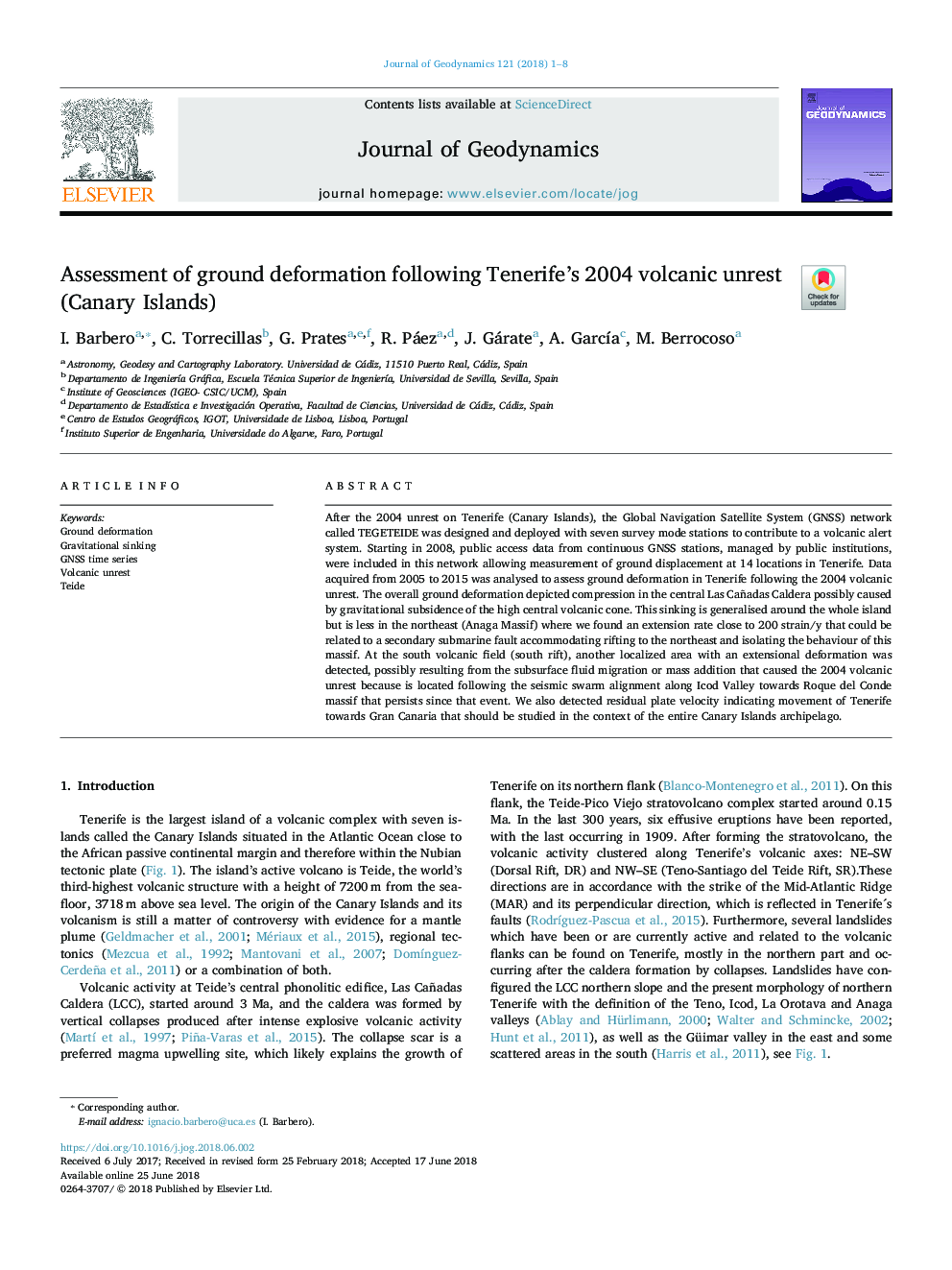| Article ID | Journal | Published Year | Pages | File Type |
|---|---|---|---|---|
| 8908359 | Journal of Geodynamics | 2018 | 8 Pages |
Abstract
After the 2004 unrest on Tenerife (Canary Islands), the Global Navigation Satellite System (GNSS) network called TEGETEIDE was designed and deployed with seven survey mode stations to contribute to a volcanic alert system. Starting in 2008, public access data from continuous GNSS stations, managed by public institutions, were included in this network allowing measurement of ground displacement at 14 locations in Tenerife. Data acquired from 2005 to 2015 was analysed to assess ground deformation in Tenerife following the 2004 volcanic unrest. The overall ground deformation depicted compression in the central Las Cañadas Caldera possibly caused by gravitational subsidence of the high central volcanic cone. This sinking is generalised around the whole island but is less in the northeast (Anaga Massif) where we found an extension rate close to 200 strain/y that could be related to a secondary submarine fault accommodating rifting to the northeast and isolating the behaviour of this massif. At the south volcanic field (south rift), another localized area with an extensional deformation was detected, possibly resulting from the subsurface fluid migration or mass addition that caused the 2004 volcanic unrest because is located following the seismic swarm alignment along Icod Valley towards Roque del Conde massif that persists since that event. We also detected residual plate velocity indicating movement of Tenerife towards Gran Canaria that should be studied in the context of the entire Canary Islands archipelago.
Related Topics
Physical Sciences and Engineering
Earth and Planetary Sciences
Earth-Surface Processes
Authors
I. Barbero, C. Torrecillas, G. Prates, R. Páez, J. Gárate, A. GarcÃa, M. Berrocoso,
